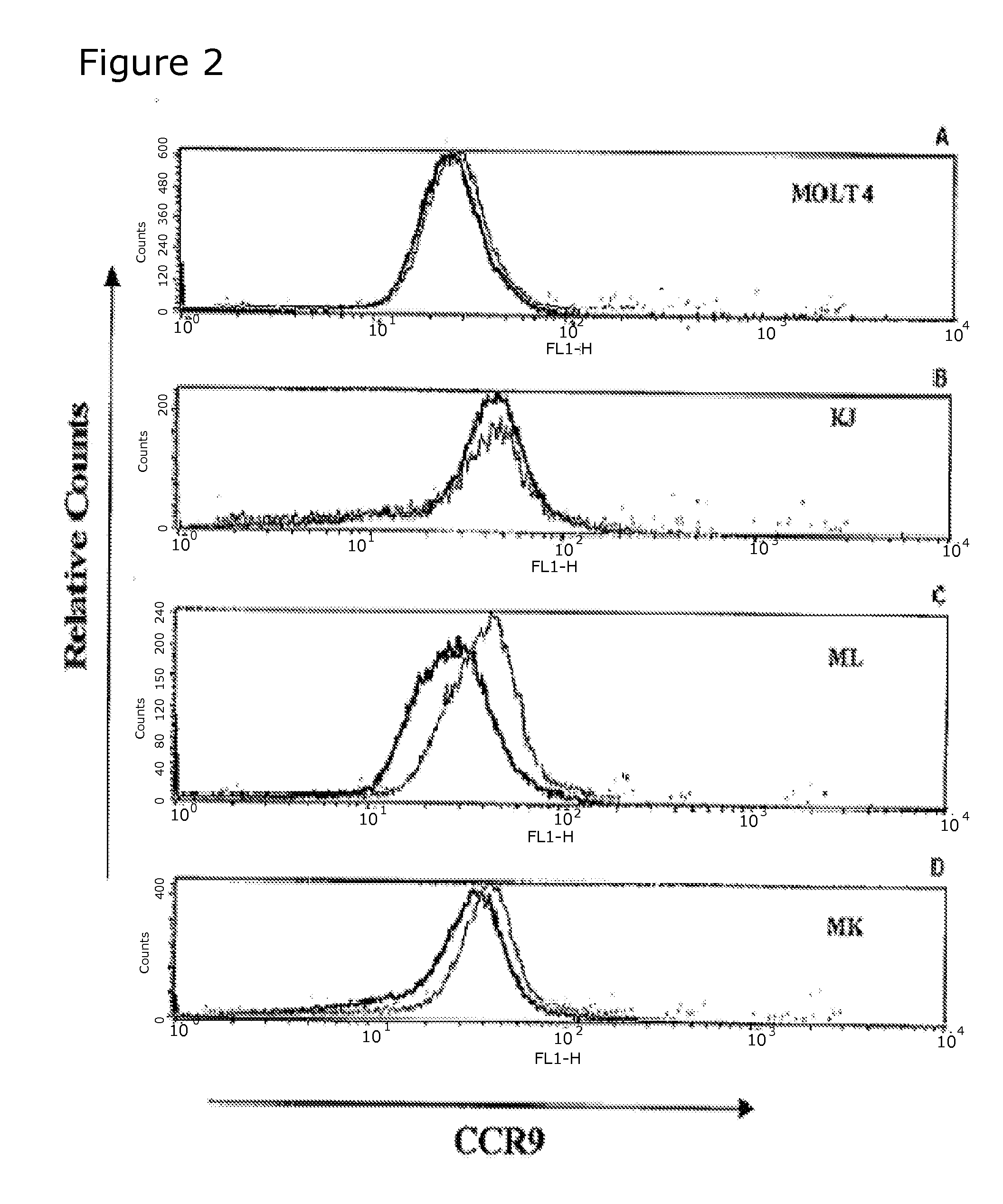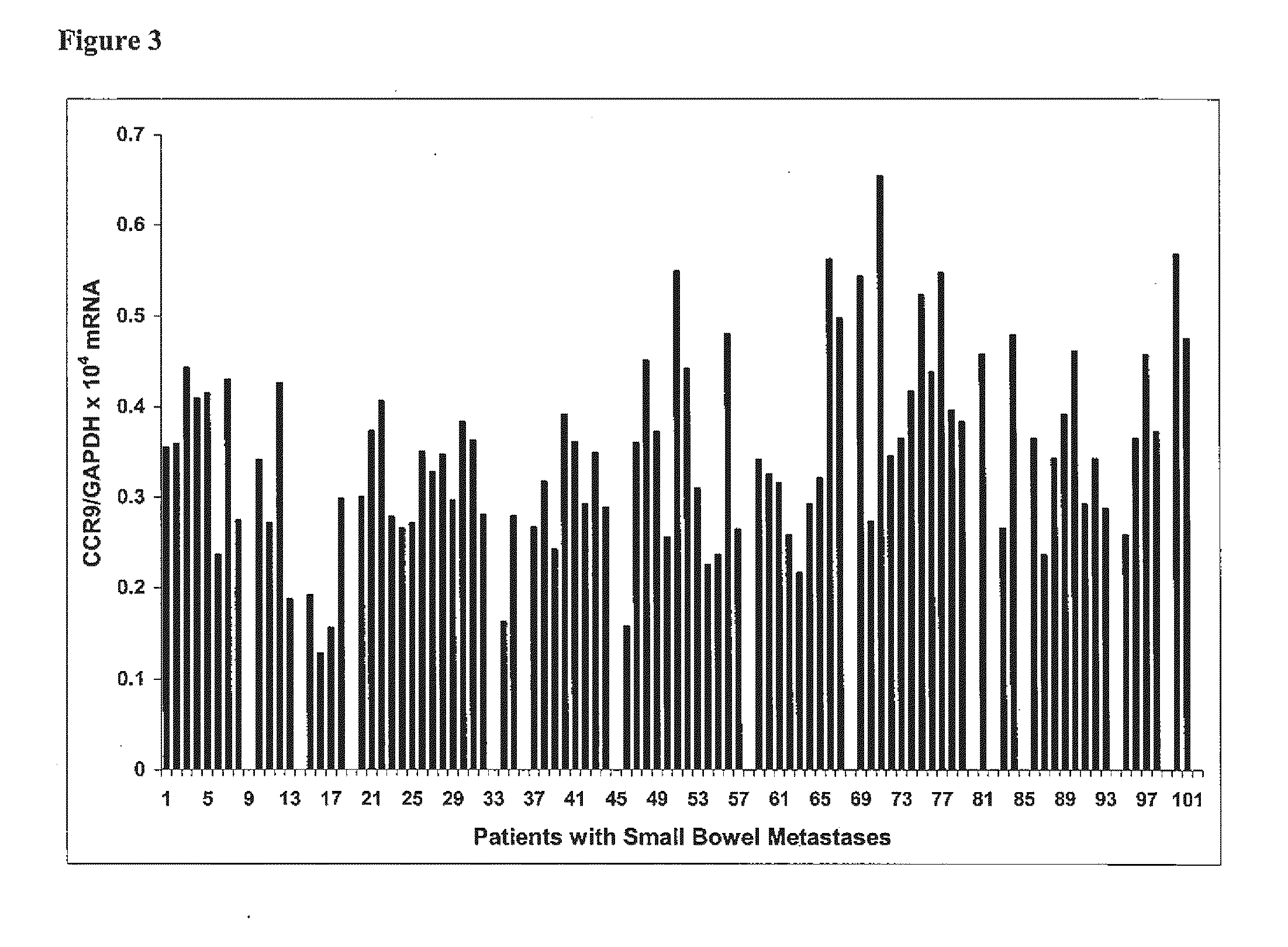Use of ccr9, ccl25/teck, and integrin alpha4 in diagnosis and treatment of melanoma metastasis in the small intestine
a technology of melanoma metastasis and integrin alpha4, which is applied in the field of cancer, can solve the problems of poor prognosis, limited treatment options, and a 5-year survival rate of approximately 10%
- Summary
- Abstract
- Description
- Claims
- Application Information
AI Technical Summary
Benefits of technology
Problems solved by technology
Method used
Image
Examples
example
Activation of CCR9 / CCL25 Expression Mediates Metastasis of Melanoma to the Small Intestine
[0037]Specific chemokines and their respective receptors have been shown to facilitate tumor-cell metastasis to specific distant organs. Melanoma has a distinct pattern of metastasis to the gastrointestinal tract; melanoma cells preferentially target the submucosa of the small bowel, rather than colon, stomach, or rectum. The underlying pathogenic mechanism for this is unknown. Human cutaneous melanoma is the most common cause of metastases in the small bowel, where CCL25, the ligand for chemokine receptor CCR9, is selectively expressed. This site-specific metastasis by melanoma cells may relate to the “seed and soil” phenomenon involving the small bowel. Here, CCR9 expression is demonstrated in 88 of 102 metastatic melanoma specimens from the small bowel, 7 of 8 melanoma cell lines derived from metastases in the small bowel, and 0 of 96 metastatic melanoma specimens from other sites. CCR9 expr...
PUM
| Property | Measurement | Unit |
|---|---|---|
| thick | aaaaa | aaaaa |
| volume | aaaaa | aaaaa |
| volume | aaaaa | aaaaa |
Abstract
Description
Claims
Application Information
 Login to View More
Login to View More - R&D
- Intellectual Property
- Life Sciences
- Materials
- Tech Scout
- Unparalleled Data Quality
- Higher Quality Content
- 60% Fewer Hallucinations
Browse by: Latest US Patents, China's latest patents, Technical Efficacy Thesaurus, Application Domain, Technology Topic, Popular Technical Reports.
© 2025 PatSnap. All rights reserved.Legal|Privacy policy|Modern Slavery Act Transparency Statement|Sitemap|About US| Contact US: help@patsnap.com



